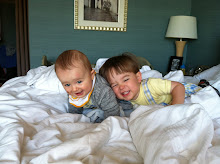
We arrived in Phnom Penh around dinner time and after checking in decided to head out on the town. We ate at the FCC (foreign correspondents club), the site where many foreign correspondents ate and lived during the Vietnam War and after. Phnom Penh, more than anywhere we had been, bears the scars of a country of recent civil war, and only recent investment from the West. There were homeless people on the streets, several men offered us drugs and/or girls under there breaths as we walked by and the streets were only lit occasionally – all which lead to Sarah being slightly terrified! However, Eddie and Shane were determined to press on and see the city so after dinner we stopped at a bar for some drinks. We ended up having a wonderful time and meeting several foreign travelers as well as Cambodians. The Cambodian people are extremely warm, have a wonderful sense of humor, and actually speak better English than anywhere we have visited in SE Asia! It struck us, however, that they have a complex relationship with tourists and the West. While they depend on us for their livelihood, they are largely exploited by us—generally; tourists come to see evidence of their recent genocide and/or sex (at least to Phnom Penh). But all of this actually made spending a few hours with both native guys and girls at a bar among other Western travelers an experience neither of us will forget.
The next morning we started our day of touring Phnom Penh, the capital of Cambodia. We began at the Royal palace, the Kings residence. It was built by the French in 1866 then rebuilt in 1917 in traditional Khmer style to symbolize their independence from France. Behind the palace is the silver pagoda which used to house the Emerald Buddha. Several of the smaller statues had been stolen by the Khmer Rouge to be sold but many of the larger ones still remained and it is a holy place for the Cambodian people and the King.
After the palace we began learning more about the Pol Pot regime, the Khmer Rouge and the genocide that lasted from 1975-1978 (although the Khmer Rouge continued guerrilla warfare against the government until the early 1990s). We began at S21 (security prison 21) that was housed at the Tuol Sleung primary school. The school complex was divided into 4 areas and the prisoners were divided into VIP (receiving the most torture) and mass detention cells. Only 7 people survived this prison and the atrocities that Pol Pot and the Khmer Rouge committed were the worst acts of torture and hatred that any of us had encountered. Pol Pot had studied the philosophy of Marx and was aiming for an entirely equal society therefore anyone with any education whatsoever (education was determined by those who could write to 10 and those who could not!!) was tortured and killed. It was truly horrible and disastrous for the country with absolutely no redeeming aspects. As mentioned above, and as expected, this continues to shape the way Cambodians interact with each other and outsiders. Most Cambodians have lost many relatives as nearly 35% of the population was executed or died of starvation. In many ways, Cambodians seemed to have the most acute sense of human nature and the importance of maintaining a sense of humor through it all. I think we both learned a lot from our time there.
To continue the depressing tour of this side of Cambodia’s past, we visited the killing fields. This is where prisoners were taken, once the prisons were too full, to be killed in gruesome ways. You could still see scraps of clothing in the ground and pieces of teeth and bone sticking up. There were several mass graves that were marked and a large memorial had been erected, full of the skulls that were found here after the Khmer Rouge fled the city. It was sobering to say the least.
We continued on to the Russian market. Every city in Asia seems to have one of these markets where you can buy anything you could ever possibly want, and everything there is a fake. It is amazing! After the market, and lunch, we went to the center of the city where a large, man-made hill exists with Wat Phnom on top of it. It is the reason for the name of the city and features a large pagoda (Buddhist temple) built in 1372.
After our touring we returned to the hotel to relax at the pool, grabbed dinner at a local noodles restaurant and returned to the hotel in time for Eddie to head to the airport. Shane and I left the next morning for southern Thailand.


No comments:
Post a Comment